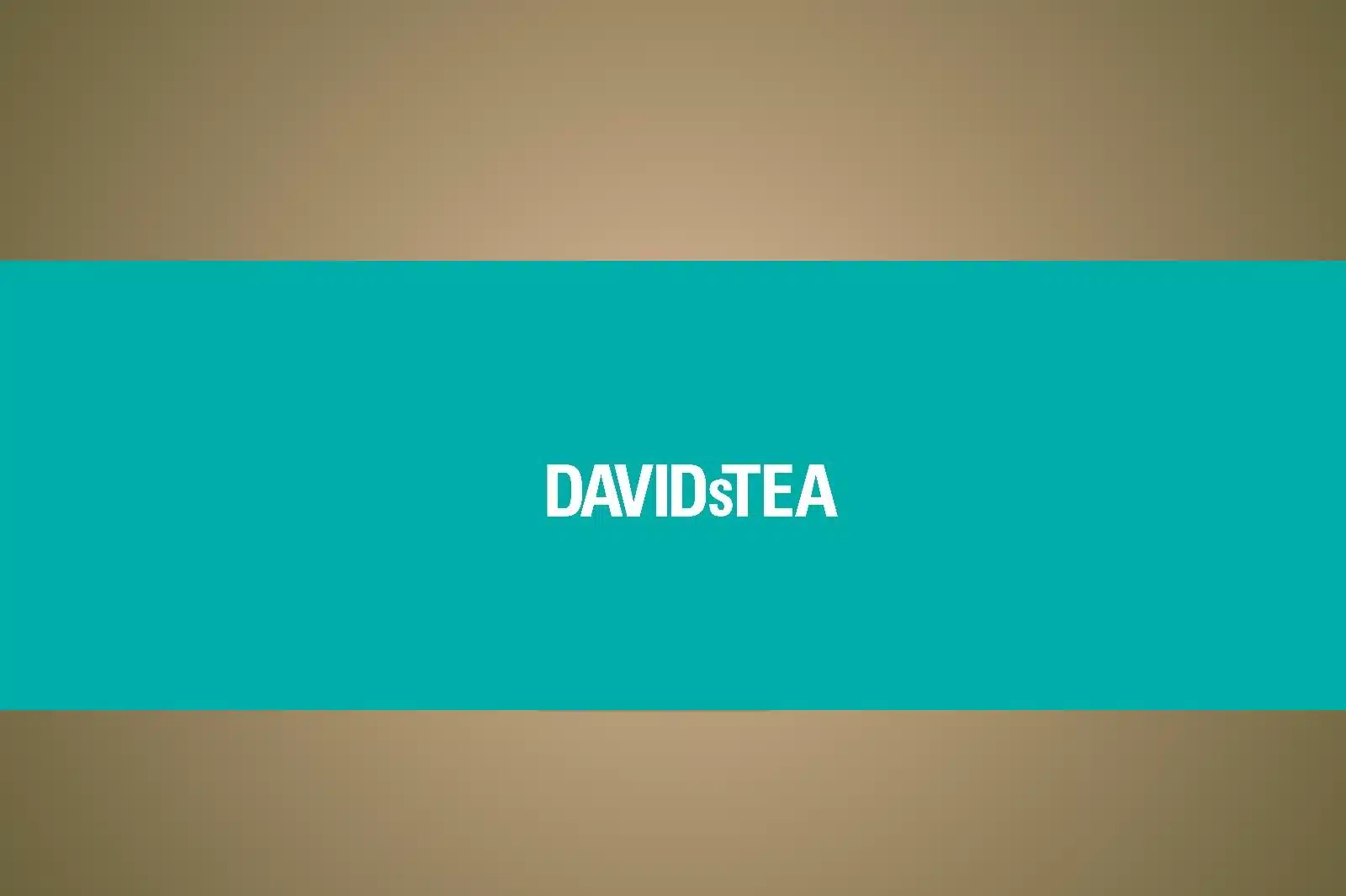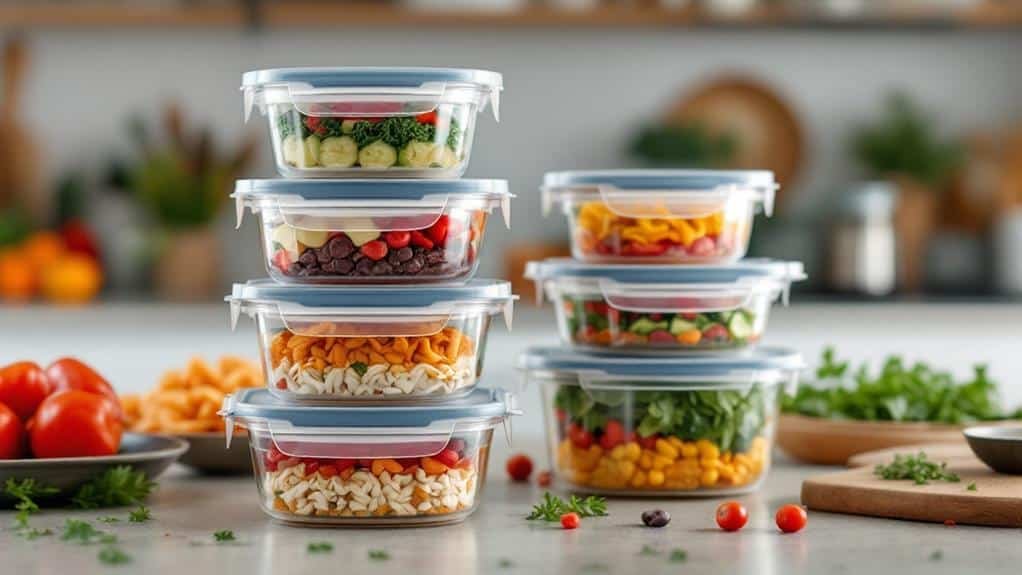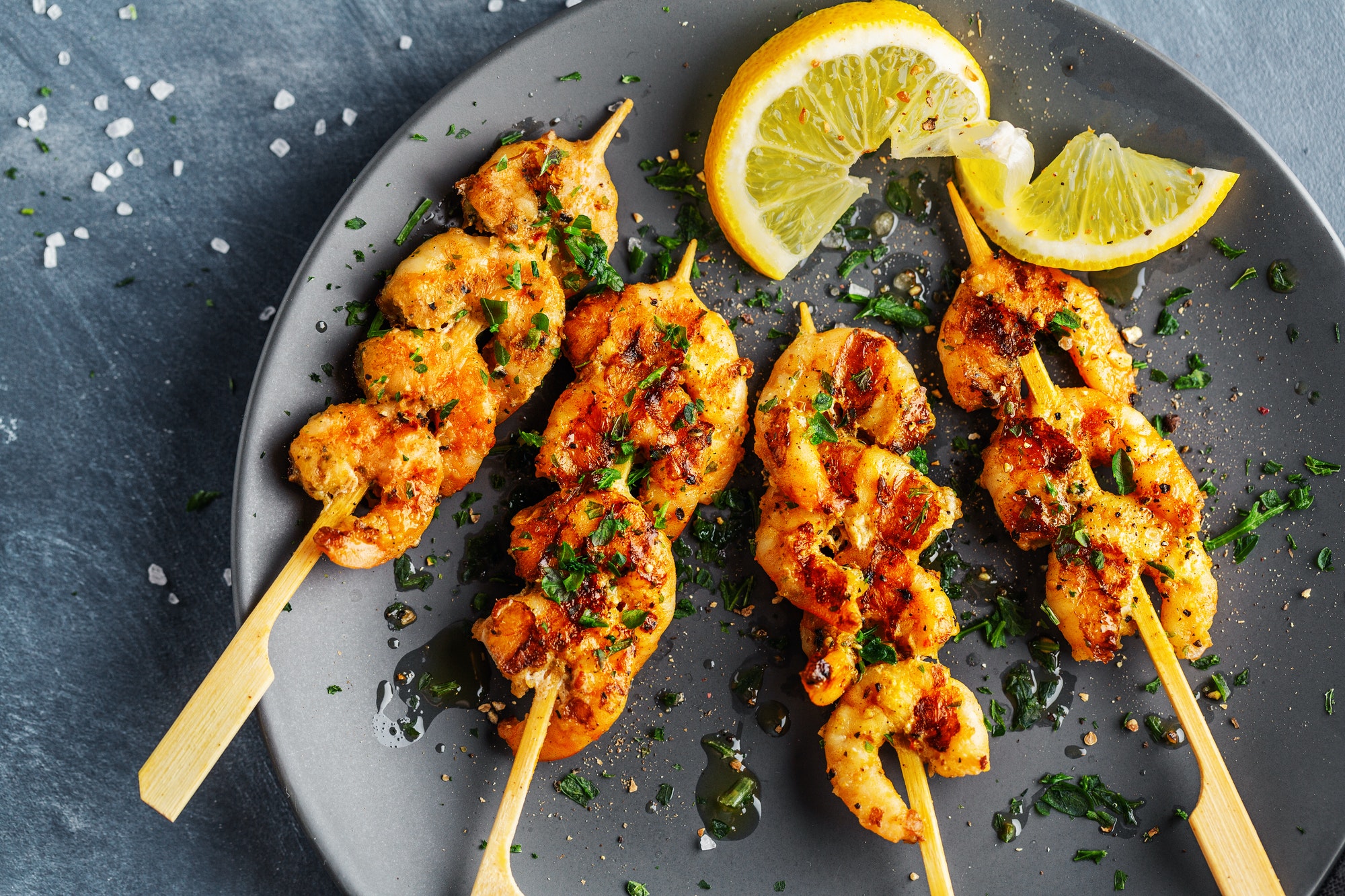Dull knives silently sabotage your culinary efforts by crushing and bruising ingredients instead of creating clean cuts. When a knife isn’t sharp, it requires more force to cut through food, increasing both injury risk and prep time while destroying the cellular structure of ingredients. This leads to faster oxidation, loss of flavour, and uneven cooking due to inconsistent piece sizes. Professional chefs understand that a sharp knife is as essential as fresh ingredients – it preserves food quality, enhances presentation, and makes cooking more enjoyable. Proper knife maintenance through regular sharpening and honing isn’t just about kitchen efficiency; it’s the foundation of better-tasting dishes. Let’s explore how to bring your knives back to life.
Sharp Knife Importance: Key Highlights
Dull knives crush and bruise ingredients instead of making clean cuts, resulting in a loss of flavour and compromised food texture.
Uneven cutting from dull blades results in inconsistent cooking times, causing some pieces to overcook while others remain undercooked.
Dull knives accelerate oxidation in cut ingredients, making them brown faster and diminishing their fresh appearance and taste.
Poor cutting precision affects presentation quality, as ragged edges and irregular shapes detract from dishes’ visual appeal.
The increased force required with dull knives damages delicate ingredients like herbs, releasing oils prematurely and reducing their flavour impact.
In this Article
The Importance of a Sharp Knife
A sharp knife is essential in any kitchen, and its importance cannot be overstated. A sharp knife is safer, more efficient, and more precise than a dull knife. It allows for smooth and effortless cutting, reducing the risk of accidents and injuries. When you use a sharp knife, you can make clean cuts that preserve the quality and appearance of your ingredients, ensuring that your dishes look and taste their best.
Sharp knives also enhance your cooking efficiency. With a sharp blade, you can quickly and easily slice through ingredients, saving time and effort during food preparation. This efficiency is particularly valuable during busy cooking sessions, allowing you to focus on perfecting your recipes rather than struggling with resistant tools whether a home cook or a professional chef, a sharp knife is an indispensable asset that elevates your culinary skills and overall kitchen experience.
How Sharp Knives Prevent Injuries
Many kitchen accidents occur due to dull knives requiring excessive force during cutting, making it crucial to keep your knife sharp for safety. When using a dull blade, you’re more likely to slip and lose control, potentially causing serious injuries. The sharp knife benefits become immediately apparent when you experience the smooth, controlled cutting motion that requires minimal pressure.
Proper cutting technique naturally flows with a well-maintained blade. Instead of sawing or forcing your way through ingredients, a sharp knife glides effortlessly, reducing strain on your wrists and fingers. These ergonomic advantages prevent fatigue during lengthy prep sessions and minimize the risk of repetitive stress injuries.
Kitchen accidents often stem from compensating for dull blades by using awkward angles or excessive force. A sharp knife eliminates these dangerous workarounds, allowing you to maintain proper form and control throughout your cutting tasks.
Regular knife maintenance is about keeping your tools in prime condition and protecting yourself. When your blade responds predictably and cuts cleanly, you can focus on creating delicious meals rather than wrestling with your ingredients.
The Dangers of a Dull Knife
A dull knife, on the other hand, is a safety hazard that can cause accidents and injuries. When a knife blade loses its sharpness, it requires more force to cut through ingredients, increasing the likelihood of slips and cuts. This added pressure can lead to dangerous situations, especially when handling slippery or tough ingredients. Moreover, a dull knife can damage your cutting board and other kitchen utensils, making it a costly and frustrating experience.
Beyond safety concerns, a dull knife can also compromise your cooking results. Instead of making clean cuts, a dull knife tends to tear and crush ingredients, affecting their texture and appearance. This can lead to uneven cooking and a less appealing final dish. For instance, delicate herbs may release their oils prematurely, and vegetables may lose their crispness. To ensure the best possible cooking outcomes, it’s crucial to keep your knives sharp and well-maintained.
Efficiency in Food Preparation
Kitchen efficiency skyrockets when using sharp knives during food preparation. The difference between struggling with dull blades and gliding through ingredients with a properly sharpened knife can transform your cooking experience. Knowing how to sharpen a knife is crucial for maintaining efficiency in food preparation. Mastering basic cutting techniques becomes effortless when your kitchen tools are maintained at peak performance.
Like food processors guarantee consistency in preparing ingredients, proper knife selection is essential in preparing food quickly. Whether dicing onions or julienning carrots, having the right sharp knife for each task eliminates unnecessary struggles and wasted time. Professional chefs understand this principle well, so they maintain their blades religiously.
Your culinary skills flourish when you’re not fighting against resistant tools. Sharp knives allow you to focus on perfecting your technique rather than compensating for dull blades. This freedom in the kitchen leads to more creative cooking and enjoyable meal preparation.
Think of your knife as a precision instrument rather than just another kitchen tool. When maintained properly, it becomes an extension of your hand, allowing you to work swiftly and confidently. The result? Meals come together faster, ingredients are cut more uniformly, and cooking becomes a joy rather than a chore.
Professional Kitchen Practices for Kitchen Knives
Precision and discipline define professional kitchen practices regarding knife work and maintenance. In commercial kitchens, chefs follow strict knife etiquette that elevates their craft while ensuring safety and efficiency remain paramount.
Professional chefs recommend organizing knives in designated stations, with each tool having its dedicated space. This level of kitchen organization protects valuable blades and creates a seamless workflow that home cooks can adapt to their own spaces. You’ll never see a professional chef frantically searching for the right knife mid-service!
Culinary precision is non-negotiable in professional settings. Chefs maintain their edges through daily honing and regular blade maintenance schedules – practices that separate the pros from the amateurs. Professional chefs follow a strict sharpening process to keep their knives, ensuring they remain effective and safe. These habits become second nature, like a well-choreographed dance in the kitchen.
The most successful kitchens treat their knives as investments rather than disposable tools. Chef recommendations often emphasize the importance of treating each blade with respect, from proper storage to regular sharpening sessions. It’s not just about having sharp knives; it’s about maintaining that edge consistently through professional-grade practices that stand the test of time.
Food Quality Preservation
Beyond professional kitchen practices, sharp knives are central in preserving food quality from prep to plate. When you slice through vegetables, fruits, or proteins with a properly sharpened blade, you’re doing more than just cutting – you’re protecting the ingredient integrity of your food. Maintaining the blade’s edge is crucial for preserving food quality, ensuring clean cuts and preventing ingredient damage.
Consider what happens when you crush delicate herbs with a dull knife versus making clean cuts with a sharp one. The difference in food texture is remarkable. Sharp blades create precise cuts that maintain cell walls, preventing unnecessary bruising and oxidation that can diminish flavour preservation and visual appeal.
The impact on culinary aesthetics cannot be overstated. Those beautiful, uniformly cut vegetables you see in restaurant dishes are not just for show. Clean cuts help ingredients cook evenly and retain their natural juices, enhancing the overall taste experience.
Cutting precision affects everything from properly releasing herb oils to maintaining the moisture of proteins. When you smash through a tomato with a dull knife, you’re watching your ingredient’s precious flavours drain onto the cutting board. A sharp knife, however, allows those flavours to shine exactly where they belong – in your finished dish.
Understanding Knife Sharpening
Knife sharpening is restoring a knife’s edge to its original sharpness. It involves removing metal from the blade to create a new edge, essential for maintaining the knife’s performance and safety. There are several methods of knife sharpening, each offering distinct advantages depending on your skill level and needs.
Using a sharpening stone, also known as a whetstone, is a traditional method that provides excellent control and precision. This technique requires practice but allows you to maintain the exact angle needed for your specific knife type. On the other hand, electric sharpeners offer convenience and consistency, making them a popular choice for home cooks who want reliable results without the learning curve. Manual sharpeners balance control and ease of use, making them suitable for those who prefer a hands-on approach.
Regardless of your chosen method, regular knife sharpening is crucial for keeping your kitchen knives sharp and effective. Investing time in proper knife sharpening ensures that your blades remain reliable tools that enhance your cooking experience.
Sharpening vs. Honing
Sharpening and honing are two distinct processes that are often confused. Sharpening involves removing metal from the blade to create a new edge, while honing involves realigning the existing edge to maintain its sharpness. Honing is a gentler process used to maintain the knife’s edge between sharpening sessions.
A honing steel is a common tool for honing. It helps realign the blade’s edge and remove any minor imperfections. While honing doesn’t replace the need for sharpening, it extends the time between sharpening sessions by keeping the blade’s edge in optimal condition. Regular honing ensures that your knife remains sharp and ready for use, making it an essential part of knife maintenance.
Different Sharpening Methods Using a Sharpening Stone
Several reliable methods exist for maintaining sharp kitchen knives, each offering distinct advantages depending on your skill level and needs. From traditional whetstone techniques to modern electric sharpeners, you’ll find a method that fits your lifestyle and comfort level.
Whetstones offer the most control and precision, though they require practice to master. Many professional chefs swear by this time-honoured method, which allows you to maintain the exact angle needed for your specific knife type. Like learning to ride a bike, you’ll never forget once you’ve got it down.
Modern sharpening methods, such as an electric sharpener, provide convenience and consistency for home cooks who want reliable results without the learning curve. While they may remove more metal than necessary, they’re perfectly suitable for maintaining kitchen knives.
Electric knife sharpeners provide convenience and consistency for home cooks who want reliable results without the learning curve. While they may remove more metal than necessary, they’re perfectly suitable for maintaining kitchen knives.
Honing methods, such as honing steel, help maintain edge alignment between proper sharpenings. Think of it as giving your knife a quick tune-up rather than a complete overhaul. Remember, proper knife care includes establishing a regular sharpening frequency – typically every few months for home cooks, depending on use.
Consistency is key to maintaining sharp, reliable kitchen tools, whether a manual or electric sharpener, whatever method you choose.
Choosing the Right Sharpener
Choosing the right sharpener is crucial for maintaining a sharp knife. Several types of sharpeners are available, each with its own advantages. Electric sharpeners are convenient and easy to use, providing consistent results with minimal effort. However, they can be expensive and may remove more metal than necessary, potentially shortening the knife’s lifespan.
Manual sharpeners offer more control and precision, allowing you to fine-tune the blade’s edge to your exact specifications. While they require more skill and practice to use effectively, they are cost-effective for those who prefer a hands-on approach. Sharpening stones, or whetstones, are popular among chefs and home cooks. They offer high precision and control, making them ideal for maintaining the sharpness of high-quality kitchen knives.
When choosing a sharpener, consider the type of knife you have, the level of precision you need, and the amount of time you are willing to spend sharpening your knife. You should also consider the sharpener’s cost and durability, as well as any additional features it may offer, such as a honing steel or a sharpening guide. By selecting the right sharpener, you ensure your kitchen knives remain sharp and effective, enhancing your overall cooking experience.
Horl® Crafting Excellence: A Family Legacy
The Lunch Pro has an affiliate relationship with HORL. If you purchase using any of the links to their website, we may receive a commission.
HORL’s remarkable journey from a humble cellar workshop to a global knife-sharpening innovator embodies the essence of family craftsmanship. Founded by Timo and Otmar, this Freiburg-based enterprise transformed from a three-person operation into an international powerhouse with over forty dedicated employees across three locations. Their unwavering commitment to quality and innovation has resulted in groundbreaking products like the HORL® 2 series and the recent HORL® Box, while maintaining the warm, family-oriented culture that sparked their initial success. Their story demonstrates how traditional values and modern innovation can forge a legacy of excellence that continues to shape the future of knife sharpening.
From Cellar to Success
The success story of HORL® began in a humble cellar workshop, where founders Timo and Otmar turned their vision for superior knife sharpening into reality. Their cellar origins, though modest, provided the perfect environment for innovation and careful craftsmanship.
What started in that small workshop quickly evolved into something remarkable. By 2018, the company had outgrown its workshop roots and moved into its first official business premises, marking a pivotal moment in HORL®’s journey.
The workshop evolution continued at an impressive pace. From three employees to over forty, from a single cellar to three office locations in Freiburg – HORL® transformed from a local family venture into an international brand.
Yet despite this growth, they never lost sight of their founding principles: quality, innovation, and craftsmanship.

Quality Without Compromise
At the core of HORL®’s remarkable growth lies an unwavering dedication to quality that has defined the company since its cellar workshop days. Every knife sharpener is crafted with meticulous attention to detail, using only premium materials that stand the test of time.
The company’s commitment to excellence extends beyond mere product manufacturing. Each design innovation focuses on perfecting traditional sharpening techniques while making them accessible to professionals and home enthusiasts. This dedication has earned HORL® a reputation for exceptional craftsmanship across Europe and beyond.
What sets HORL® apart is their no-compromise approach to quality control. Whether it’s their flagship sharpeners or the newest accessories like the HORL® Box and Kagami, every product undergoes rigorous testing to guarantee it meets the highest performance and durability standards.
Sharpening as the Solution
While various sharpening methods exist, it remains the definitive solution for maintaining effective kitchen knives. Proper blade maintenance not only enhances culinary skills but also guarantees safety in the kitchen.
When it comes to knife care, investing time in learning proper sharpening techniques pays dividends in your cooking journey. Think of it as giving your trusted kitchen companion a well-deserved spa day – your knife will thank you with years of reliable service.
Consider these essential benefits of regular knife sharpening:
Reduces the risk of kitchen accidents by maintaining predictable blade behaviour
Preserve the integrity of your ingredients through clean, precise cuts
Saves time and energy during food preparation
Enhances the presentation of your final dishes
Extends the lifespan of your valuable kitchen tools
Safety practices should always guide your approach to blade maintenance. Start with basic sharpening techniques and gradually build your confidence. Remember, a sharp knife isn’t just a tool – it’s your partner in creating culinary masterpieces. By sharpening a regular part of your kitchen routine, you’ll experience the joy of effortless cutting and improved cooking efficiency.
Frequently Asked Questions
Can Storing Knives in a Dishwasher Affect Their Sharpness?
Yes, dishwashers can severely impact blade longevity through dishwasher damage. Proper knife maintenance requires hand washing and careful storage solutions. Harsh detergents and mechanical cleaning methods can dull edges and compromise blade quality.
How Long Does a Professionally Sharpened Knife Typically Stay Sharp?
While usage varies significantly, professionally sharpened knives typically maintain their edge for 3-4 months with proper care. Regular honing and careful storage between professional sharpenings can notably extend a knife’s best performance.
Do Different Cutting Board Materials Impact Knife Sharpness Differently?
Different cutting board materials greatly impact knife sharpness. Glass and stone boards quickly dull blades, while wood and quality plastic boards preserve edge retention, maximizing food preparation efficiency and reducing sharpening frequency.
What Temperature Changes Can Affect a Knife’s Edge Retention?
Extreme temperature fluctuations can affect steel composition and edge geometry, while varying humidity levels may impact blade stability. Understanding these factors helps maintain ideal edge retention and influences when to apply sharpening techniques.
Should Expensive Knives Be Sharpened More or Less Frequently Than Budget Ones?
Sharpening frequency depends more on usage habits than knife quality. While higher-end knives often have superior steel composition, but they require regular edge maintenance based on their usage frequency, not their price point.
Conclusion
The journey to culinary excellence begins with properly maintained blades honouring ingredients and craftsmanship. Sharp knives transform kitchen experiences, preserving the integrity of foods while ensuring safety remains paramount. Through consistent maintenance and proper sharpening techniques, kitchens become sanctuaries of efficient, safe food preparation. When blades slice precisely, dishes maintain their intended flavours, textures, and nutritional value – elevating every meal from mundane to memorable. Investing in knife care ultimately invests in the joy of cooking itself.









